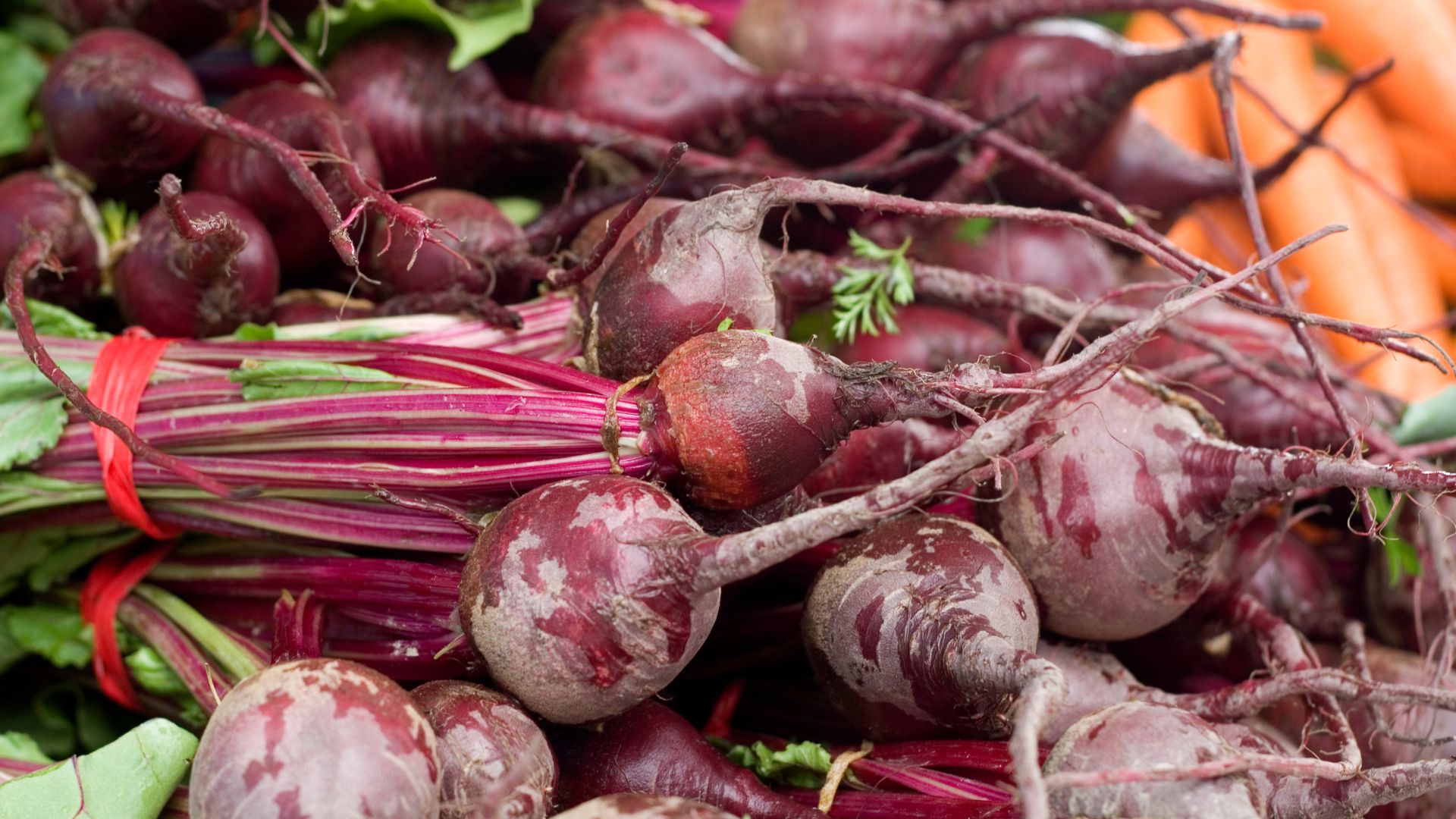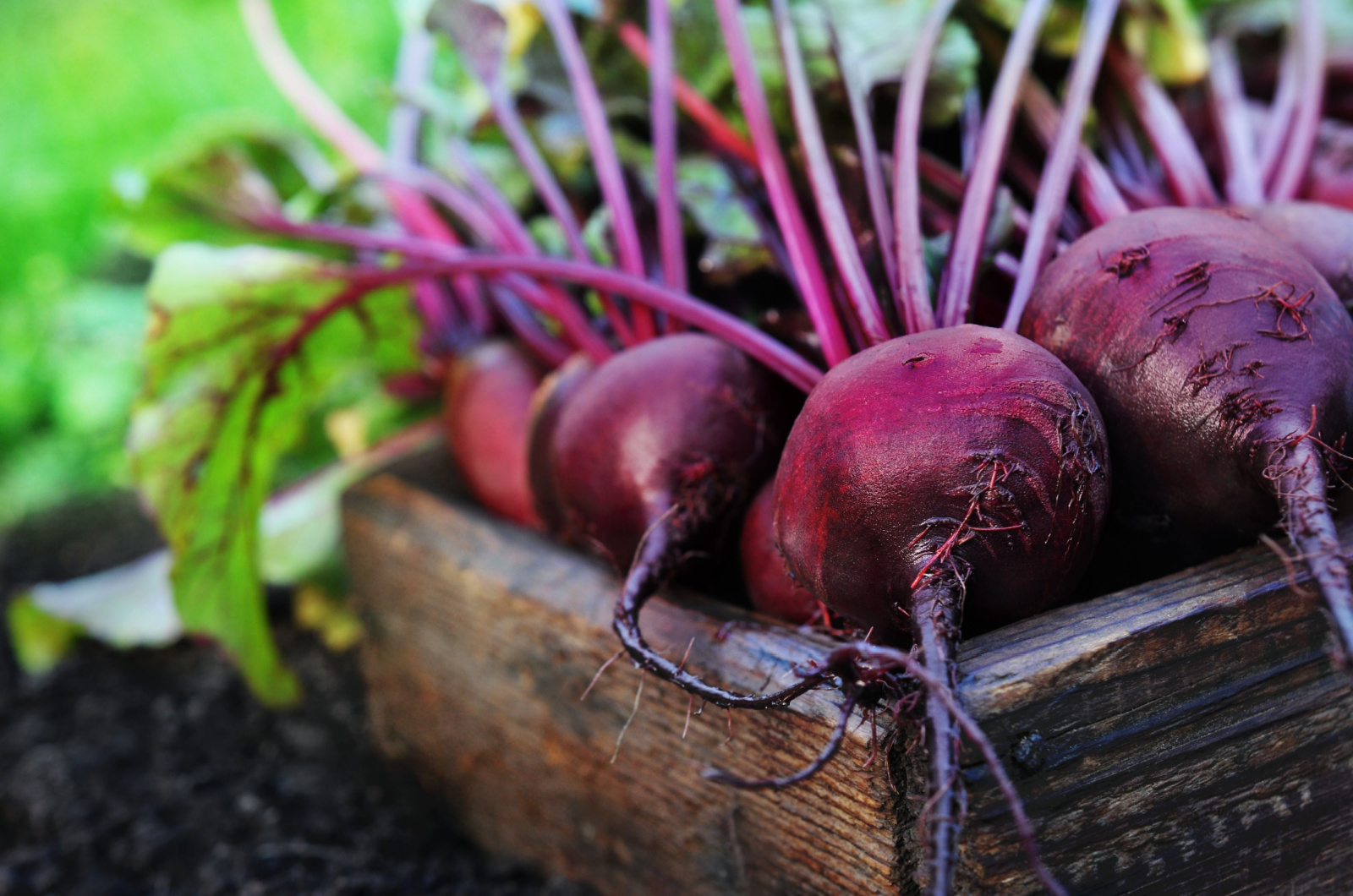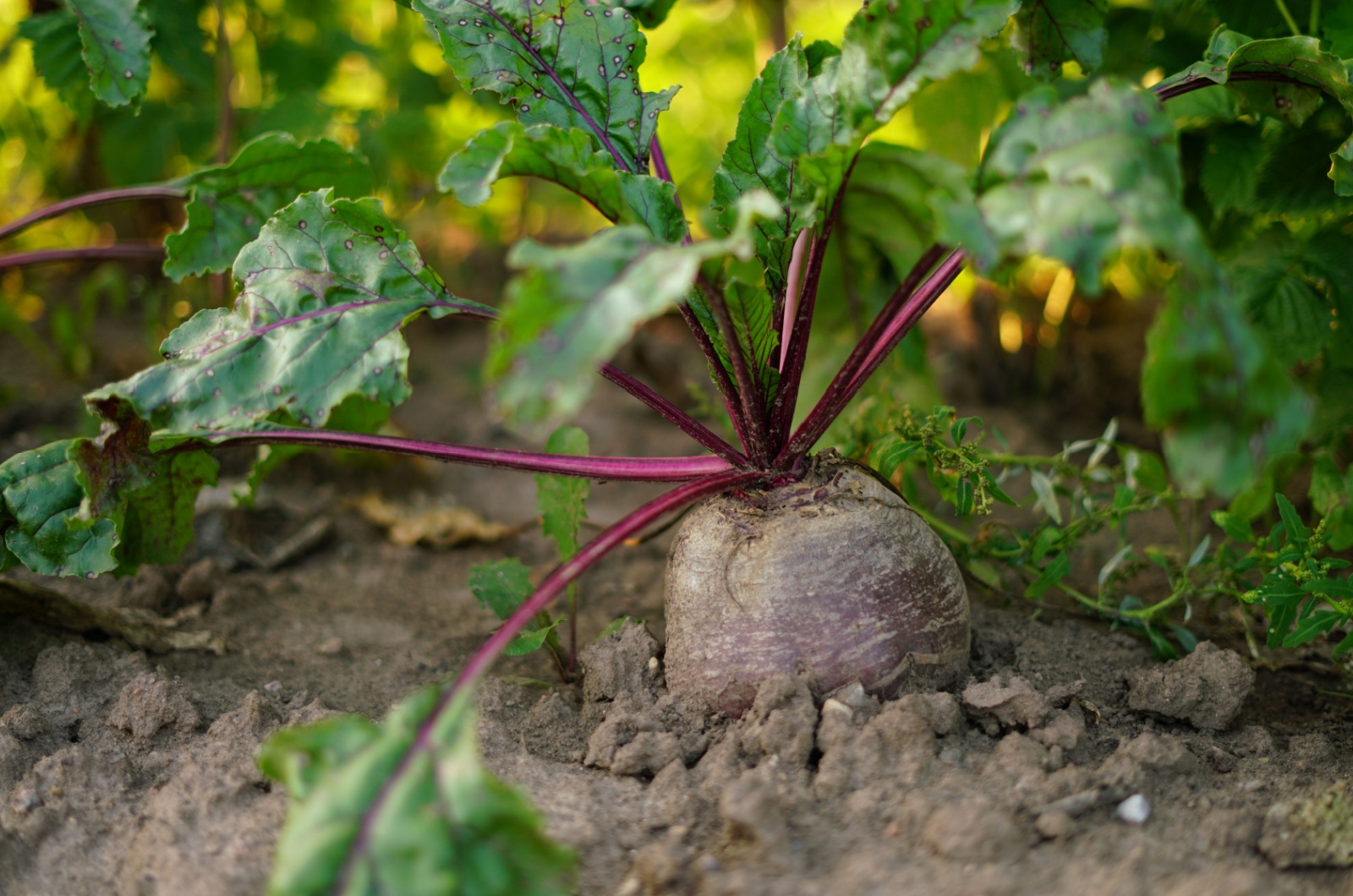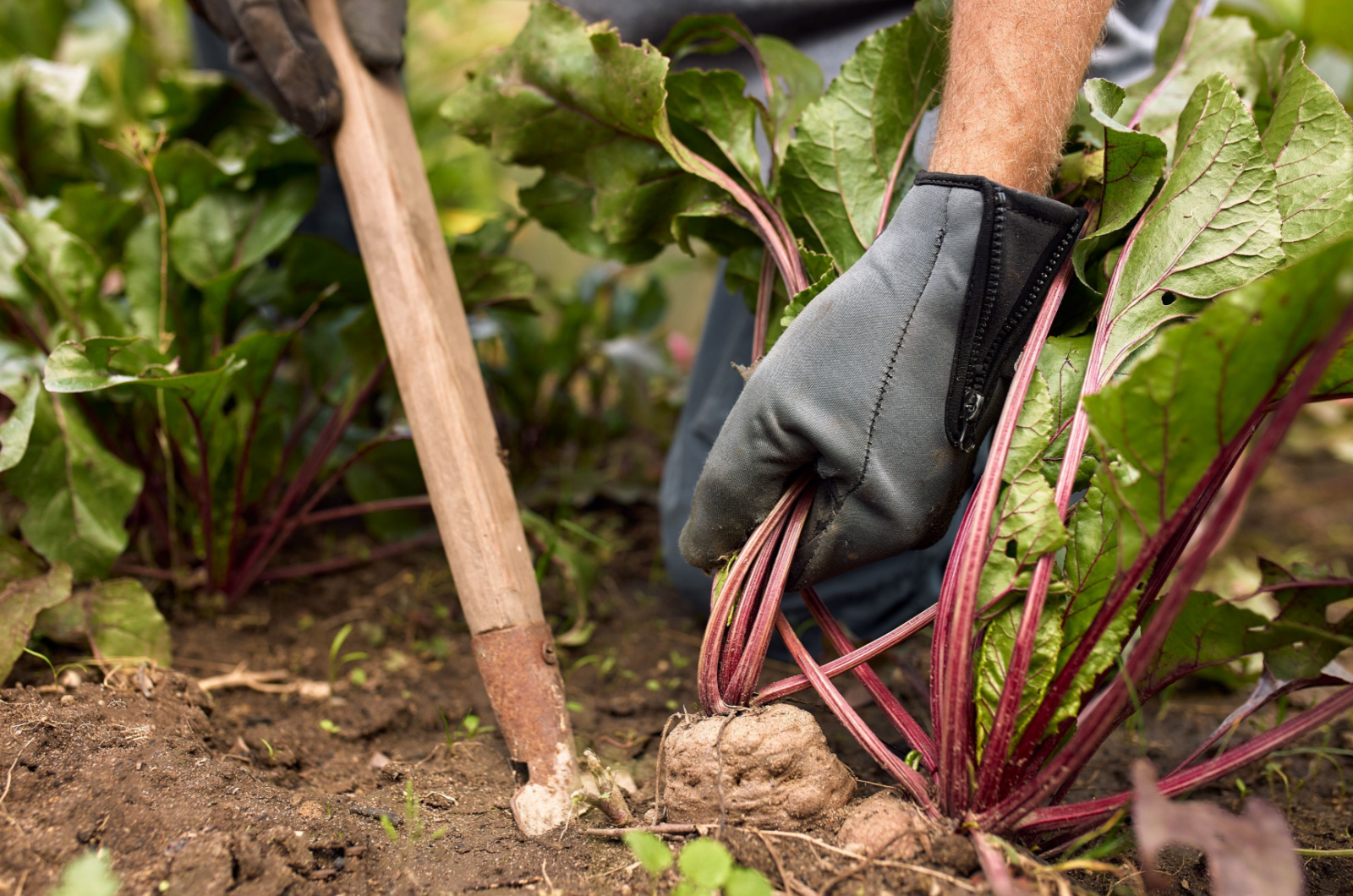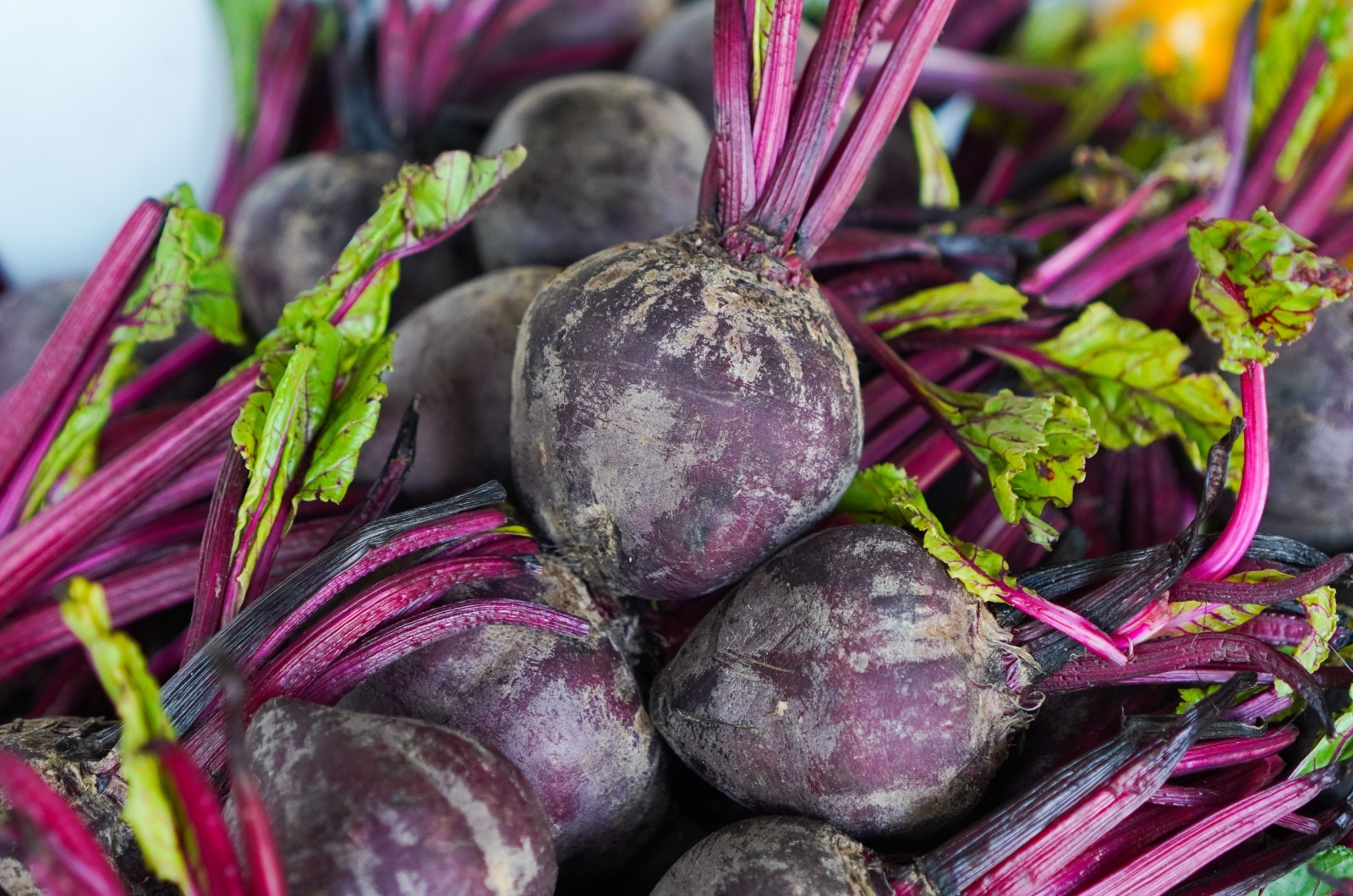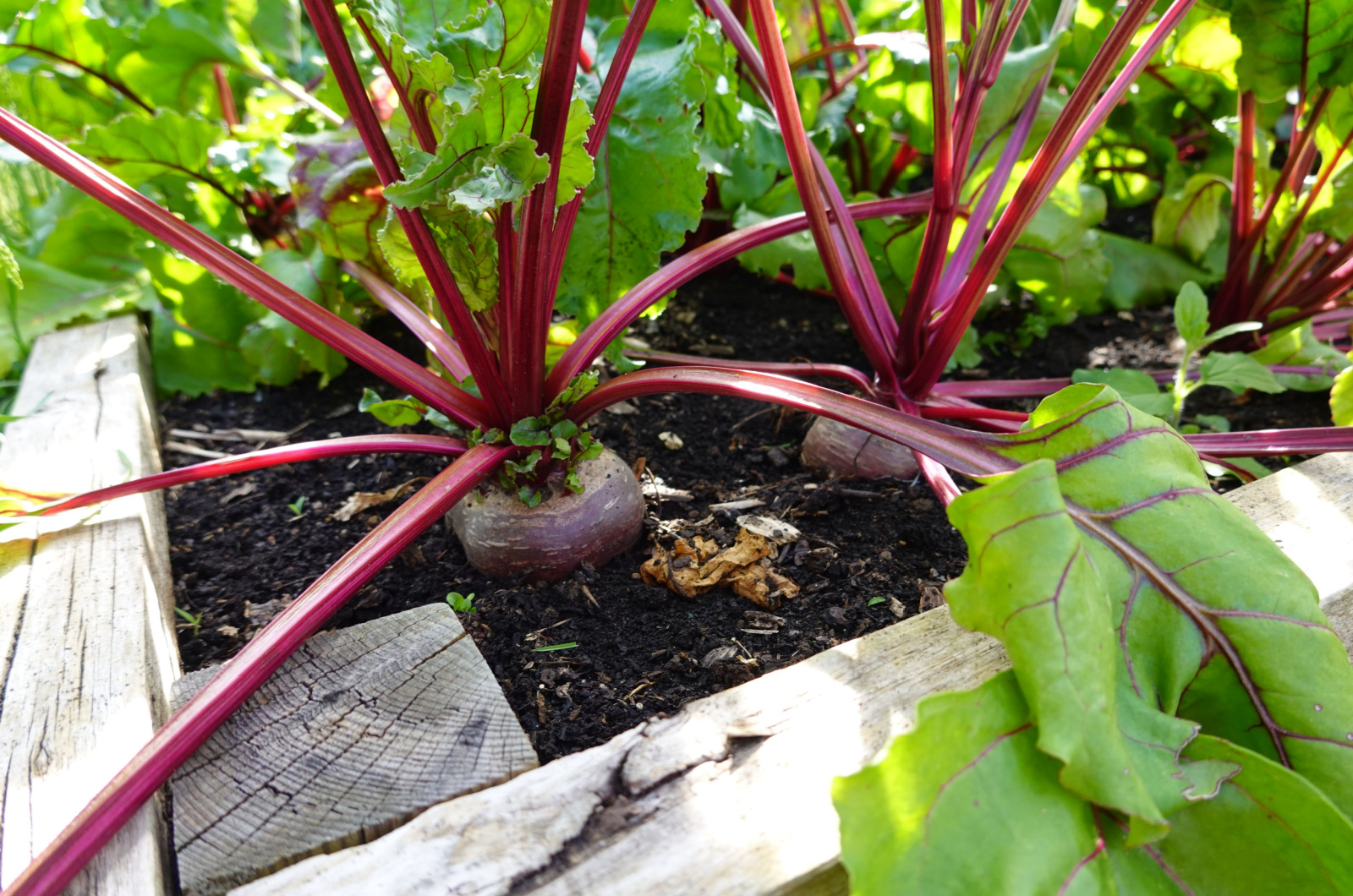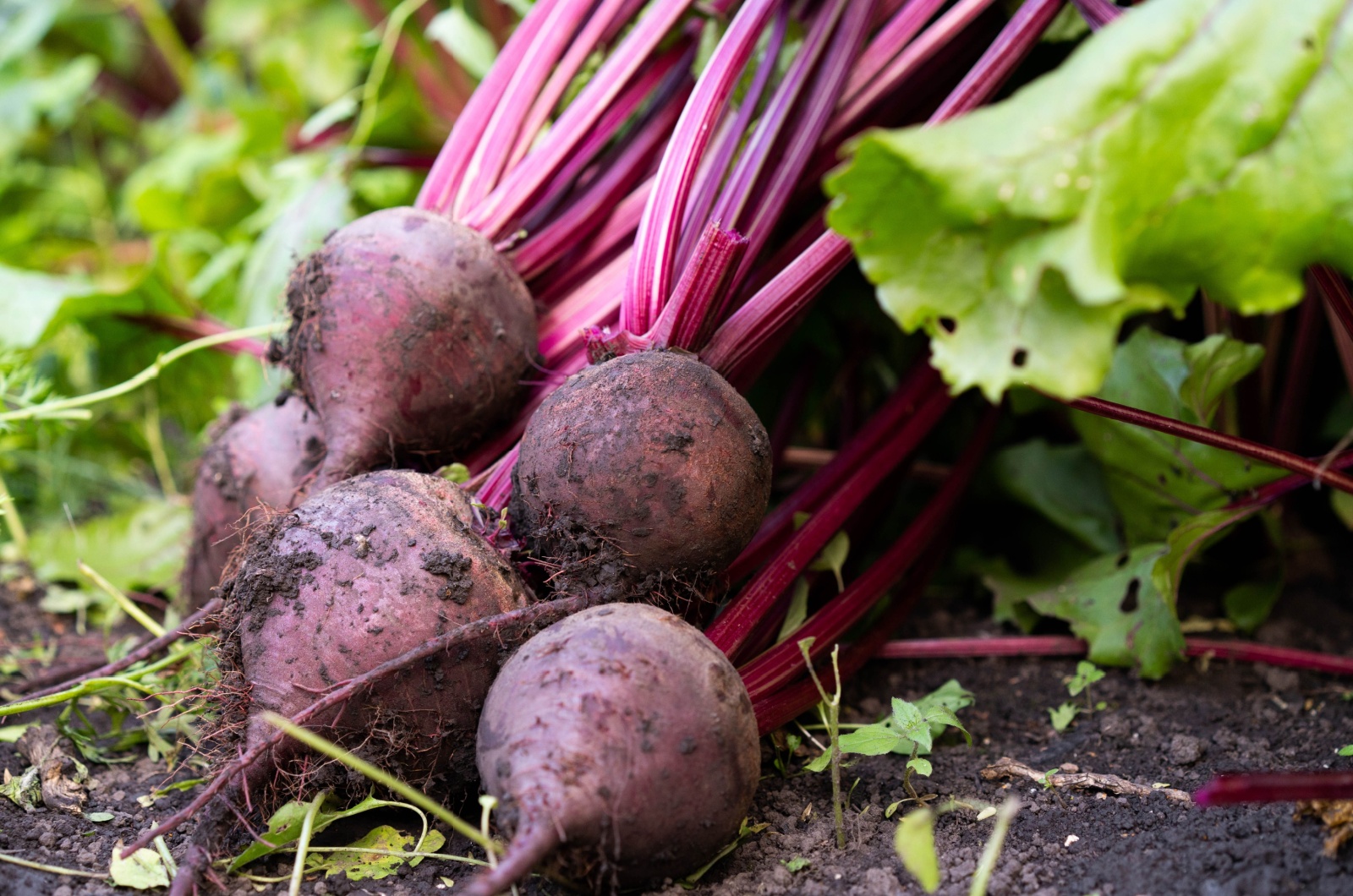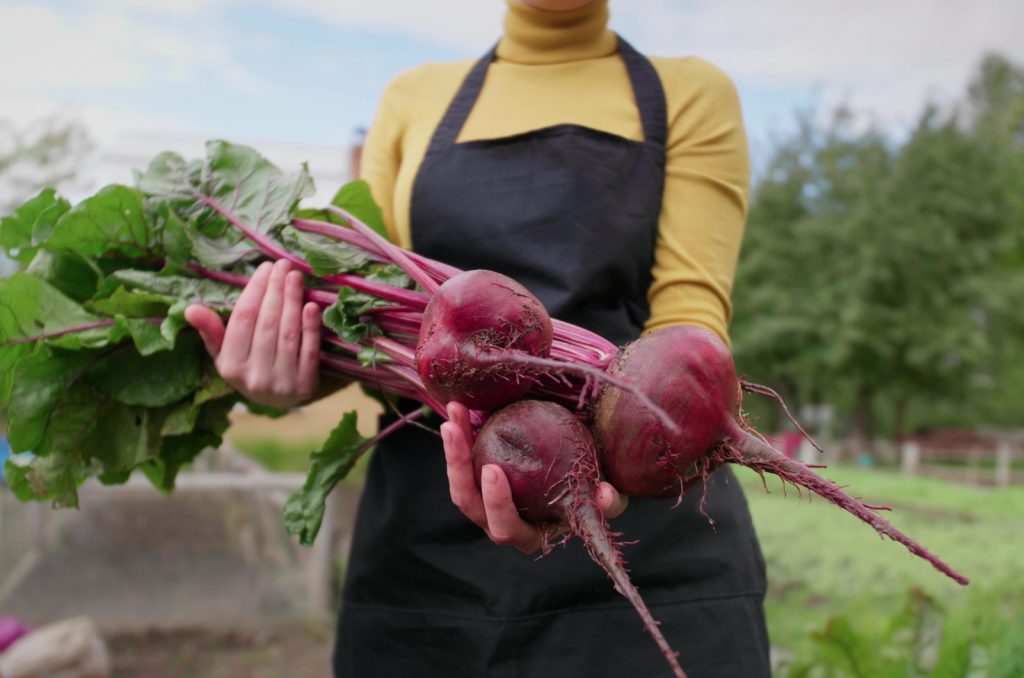Fast and easy-to-grow crops such as beets are favored among gardeners. And while growing them is simple enough, there are things you can do to improve their flavor.
One of those things is harvesting them at the right time and with the right technique.
Here’s everything you need to know about harvesting beets, from the right time to do it, tips that can help you decide whether your crop is ready for the harvest, and the best technique you can employ.
Let’s get started!
When To Harvest Beets
Beetroot is a cool-season vegetable we usually grow in spring or fall, but you can have it producing delicious roots even during winter with a little bit of extra protection.
It usually matures in about 50-70 days after sowing, but its growth rate mainly depends on the weather and other growing conditions.
And if you grow it in fall, you’ll be glad to hear that this veg can tolerate some light frost. In fact, it becomes tastier if it gets exposed to it. However, you should harvest it before the ground completely freezes.
Additionally, you can harvest beets at almost any stage of their growth cycle. Many gardeners harvest baby beets, which are the size of a golf ball, quickly ready for the harvest, and have soft skins they don’t need to peel.
Others opt for harvesting fully matured beets, which get as large as a tennis ball. You will have to peel their skins if you want to consume them, but that rind makes them perfect for storing over winter.
Also, you can eat beet leaves while waiting for the roots to ripen. Once they’re about 2-3 inches long, you can snip them off and throw them into your salad, sauté them, etc.
Just remember to leave some of the greenery so that your vegetables can continue to grow.
If you’ve looked at various heirloom seeds, and opted for beets, know that you’ll quickly be able to enjoy their roots and leaves.
How To Tell They’re Ripe
Sometimes it may be difficult to tell whether your beets are ready for harvest because their growth mainly happens underground. Luckily, there are several tips that can help you determine whether the roots are large enough for harvesting.
The first thing is to check the seed packet to see how many days to maturity your variety takes and make sure yours has been in the ground the minimum amount listed.
The next step is to examine your beets. If the foliage is large and lush, the roots are growing nicely and you can leave them in the ground for a bit longer. But if the leaves are wilted, the beetroots may already be past their prime and you should pick them at once.
And if you’re still not sure whether you should collect your beetroots, you can dig into the soil with your hands and expose the top third of the root. If it’s about the size of a golf ball or larger, you can collect them immediately.
But if they’re smaller than that, cover the root with soil and let them grow a bit more.
Beet Harvesting Tips
There are quite a few beetroot growing mistakes we can make, and one of them is harvesting them incorrectly.
To avoid damaging your yield, here are some tips that can ensure a successful harvest every time.
• Harvest the beetroots when the substrate is damp to make it easier. Plan to do it on a rainy day or water them well the day before.
• Loosen the soil around the beetroots with a trowel or a garden fork. Just make sure not to damage the roots in the process.
• Grab the beets as close to the base as possible and gently pull them out of the loosened soil.
• If the substrate is still hard, you can use a trowel or a shovel to dig the beets up or lever them up while pulling on their leaves at the same time.
Storing Beets
After the harvest, you can use the beetroots straight away or store them over winter.
When storing these vegetables, make sure to cut off their foliage immediately after pulling them out of the ground, leaving about an inch-long stalk. These short stalks will keep your beets fresh for longer and prevent their juice from bleeding during storage.
As for the beet leaves, they will last about 3-5 days in your fridge and you can use them as a substitute for spinach or kale.
And if you want to use the beetroots straight away, wash them thoroughly and let them dry. Put them in a bag with holes and store them in your crisper drawer, where they will last for about 7-14 days.
You can also try pickling or canning your beetroots if you want to store them for longer.
Another way of storing fresh beets is in your root cellar or any other cold and dark place. In this case, you don’t want to wash them after the harvest. Instead, store them in a single layer in a cold and dark place for a couple of days and then brush off the dirt.
Pack the beets in crates or containers filled with sawdust or sand and leave them in your root cellar, where they will last for up to 5 months, provided the temperatures are between 32-40°F.
Can You Leave Beets In The Soil For Too Long?
Beetroot is on the list of the fastest-growing crops for busy gardeners, and sometimes you may have more pressing matters than harvesting beets to attend to.
The good news is that beets can stay in the ground for about four months before you decide to harvest them and they won’t get spoiled. They’re not like other vegetables in this regard.
Just don’t leave them in the soil for too long because they can become chewy, tough, fibrous, and simply unpleasant to consume.
Why Do My Beets Have Leaves But No Roots?
One of the most common causes of your beets being all greenery and no roots is overfertilization – with nitrogen in particular.
This nutrient encourages vegetative growth and your plant may divert all its energy into producing leaves instead of saving something for the roots.
Other reasons for plenty of leaves and no beetroots may be soil compaction, nutrient deficiency, or lack of proper spacing, so make sure to check all these reasons before treating your plants with anything.
How To Get Beets To Grow Larger
A surefire way to get the largest beetroots possible is to plant them in a loose and nutrient-rich soil amended with compost, and keep them in a location where they can get at least six hours of light per day.
You should also make sure to water your beets with approximately an inch of moisture per week and space them about 2-4 inches apart.

